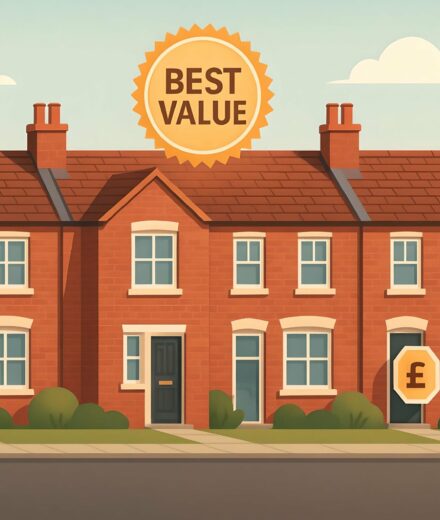

Swansea’s house prices may not be making bold moves, but the data is quietly building a case. Take a moment to scroll through the figures and you’ll see who’s gaining ground.
This page takes the latest sales figures and makes them readable, useful, and not remotely overwhelming.
House Prices > Swansea
| Year | Average Price | Transactions |
|---|---|---|
| 2025 (proj.) | £228,400 | 4,077 |
| 2024 | £218,900 | 3,156 |
| 2023 | £210,200 | 3,674 |
| 2022 | £214,600 | 4,398 |
| 2021 | £206,700 | 5,066 |
| 2020 | £185,500 | 3,540 |
| 2019 | £176,000 | 4,304 |
| 2018 | £170,300 | 4,400 |
Looking over the past seven years, Swansea’s property market has put on a rather energetic sprint for homeowners and buyers alike. Average prices have ticked up nearly every year, with just a slight wobble in 2023 before picking up pace again—climbing faster than a cat up a tree in a thunderstorm.
Boiling it down further, the draw of Swansea remains robust for a string of different buyers—from families looking for roomier spaces, to investors seeking city returns with a slice of seaside flair. If you’re eager to forecast next year’s housing climate, the latest predictions are explored in greater detail in Swansea House Prices: What’s Your Property Worth in 2025?.
With home values hitting fresh peaks and buyers circling ever closer, Swansea’s property market is looking livelier than Wind Street on a Friday night.
Prices change fast in Swansea. Keep up by reviewing the live houses for sale in Swansea.
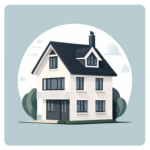
Avg. Property Price: £376,300
Avg. Size of Property
1,586 sq/ft
Avg. Cost Per Sq/ft
£253 sq/ft
Total transactions
393 (since 2021)
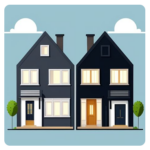
Avg. Property Price: £207,400
Avg. Size of Property
1,098 sq/ft
Avg. Cost Per Sq/ft
£197 sq/ft
Total transactions
316 (since 2021)
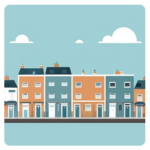
Avg. Property Price: £153,800
Avg. Size of Property
965 sq/ft
Avg. Cost Per Sq/ft
£170 sq/ft
Total transactions
1,330 (since 2021)
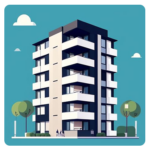
Avg. Property Price: £170,400
Avg. Size of Property
719 sq/ft
Avg. Cost Per Sq/ft
£238 sq/ft
Total transactions
100 (since 2021)
In Swansea, the property market’s distinctiveness is written across every district, but nowhere is it more vivid than when you compare detached homes with those stone-fronted terraced favourites or compact city flats. Here, the variation in value is almost as dramatic as the sweep of Swansea Bay at sunset.
Detached homes dominate the top end, not just in average price but also in size. These properties command a premium because, frankly, you get sprawling, private space. The cost per sq/ft reflects a willingness among buyers for exclusive perks: parking, gardens, and the sort of breathing room that makes busy family life manageable. Yet, with only 374 transactions since 2021, these grander homes are slightly rarer treasures, changing hands less frequently.
Flats mark out a contrasting territory. They sit several rungs below on the price ladder, and buyers here tend to be either those prioritising city-centre convenience or newcomers to the property scene. The modest square footage of these properties aligns with a cost per sq/ft that, interestingly, isn't dramatically lower than larger homes. This hints at urban popularity and reflects competition for smaller spaces near the marina or university quarter. With just 99 transactions since 2021, flats are changing hands less frequently—sometimes almost as rare as a warm, windless July afternoon at Caswell.
Semi-detached homes offer an appealing middle ground. They balance above-average size and moderate prices, often appealing to buyers stretching from young families to downsizers. Transaction activity is robust, with 300 sales recorded, underscoring strong demand for that blend of space-without-solitude.
Then we have terraced houses — the backbone of Swansea’s property market. With an impressive 1,321 transactions since 2021, these homes are being snapped up faster than chips after a Friday night at Wind Street. The cost per sq/ft is the lowest among all types, underscoring their attractiveness to savvy buyers seeking functional space at a sharp price. These properties are abundant and flexible, meeting the needs of every generation from fresh graduates to established investors.
We have seen unmistakable preferences play out:
By 2030, Swansea could see its terraced heartlands remain steady in demand, with modern flats possibly surging in value as city-centre living continues to attract ambitious younger buyers. Not sure where your budget fits best? Explore our guide to Swansea’s best streets for tailored advice.
| District | Avg Price (£) | Transactions |
|---|---|---|
| SA1 | £146,200 | 5,184 |
| SA2 | £239,500 | 4,008 |
| SA3 | £343,500 | 3,370 |
| SA4 | £199,400 | 5,411 |
| SA5 | £143,800 | 2,970 |
| SA6 | £155,700 | 3,404 |
| SA7 | £177,700 | 1,537 |
| SA8 | £181,100 | 1,343 |
| SA9 | £157,800 | 1,558 |
Swansea’s property market reveals stark contrasts from district to district, reflecting its distinct neighbourhood personalities and ever-shifting fortunes. Average prices in the city move like the Gower tides – rising sharply in some areas and barely nudging in others, with demand zigzagging in unpredictable ways, just as you’d expect from a city where rain and sunshine can both arrive in the same quarter hour.
SA3 stands tall with the priciest homes, a marker of pure desirability – think expansive coastal views, tranquil cul-de-sacs, and a sense of space that lures buyers ready to pay a premium. In contrast, pockets such as SA5 and SA1 serve up affordability, welcoming a wider range of buyers. If you’re comparing districts, the sheer difference in outlay is hard to ignore: what you might class as a starter home in the city’s west, could buy a comfortably sized family property further north.
Activity levels tell a different story. The highest number of sales is found in SA4 and SA1, both of which are bustling with first-time buyers keen on getting their foot on the rung, families chasing schools with solid reputations, and investors looking for rental-friendly patches. Meanwhile, SA7 and SA8 are far quieter, but this scarcity of movement can sometimes mean a fiercely loyal community or, occasionally, some hesitance among buyers when it comes to resale.
At M0VE, we’ve found that some of these districts display their own personalities:
If you’re sizing up where to get the best value for money or debating if prestige trumps practicality, Swansea House Prices: What’s Your Property Worth in 2025? provides essential local analysis for your decision-making.
The Swansea market moves in mysterious ways — sometimes faster than a bus up Wind Street after closing time. Knowing where to look, and what drives buyers and sellers, is what makes the difference here.
Please also check out the following areas in Swansea for further insights:
| City | Avg Price (£) | Transactions |
|---|---|---|
| Neath | £147,100 | 4,491 |
| Llanelli | £153,100 | 5,648 |
| Port Talbot | £137,100 | 3,546 |
| Ammanford | £164,400 | 1,930 |
| Burry Port | £172,200 | 683 |
| Maesteg | £123,500 | 1,522 |
| Kidwelly | £172,900 | 605 |
| Porthcawl | £290,600 | 1,535 |
| Bridgend | £192,500 | 7,281 |
| Treorchy | £105,500 | 981 |
Swansea’s property market sits in a sweet spot—it’s neither the cheapest nor the priciest in South Wales. Looking at nearby areas, we notice some fascinating contrasts that might surprise even long-time locals.
If you’re weighing up where to buy, let’s remember that Swansea’s market follows a steady, dependable pattern. Prices here are tiptoeing up, not spiking, giving a sense of dependability that many crave right now. Neighbouring areas add texture and choice, whether you’re after village quiet, seaside flair, or lively town spirit.
At M0VE, we see Swansea’s market as a comfortable, inviting scene—never frantic, but reliably in motion, like the waves along the bay.
Please keep in mind, the shown averages focus on district-wide sale prices and transaction counts.
Property size and cost per square foot are not factored in, meaning some shifts may be missed. To explore further, visit our blog.
Our valuations begin with certified property data and are transformed through an unusually clever process. Every figure is rebalanced to reflect what homes are realistically worth, not just what the raw numbers suggest.
Our site uses cookies. By using this site, you agree to the Privacy Policy and Terms of Use.